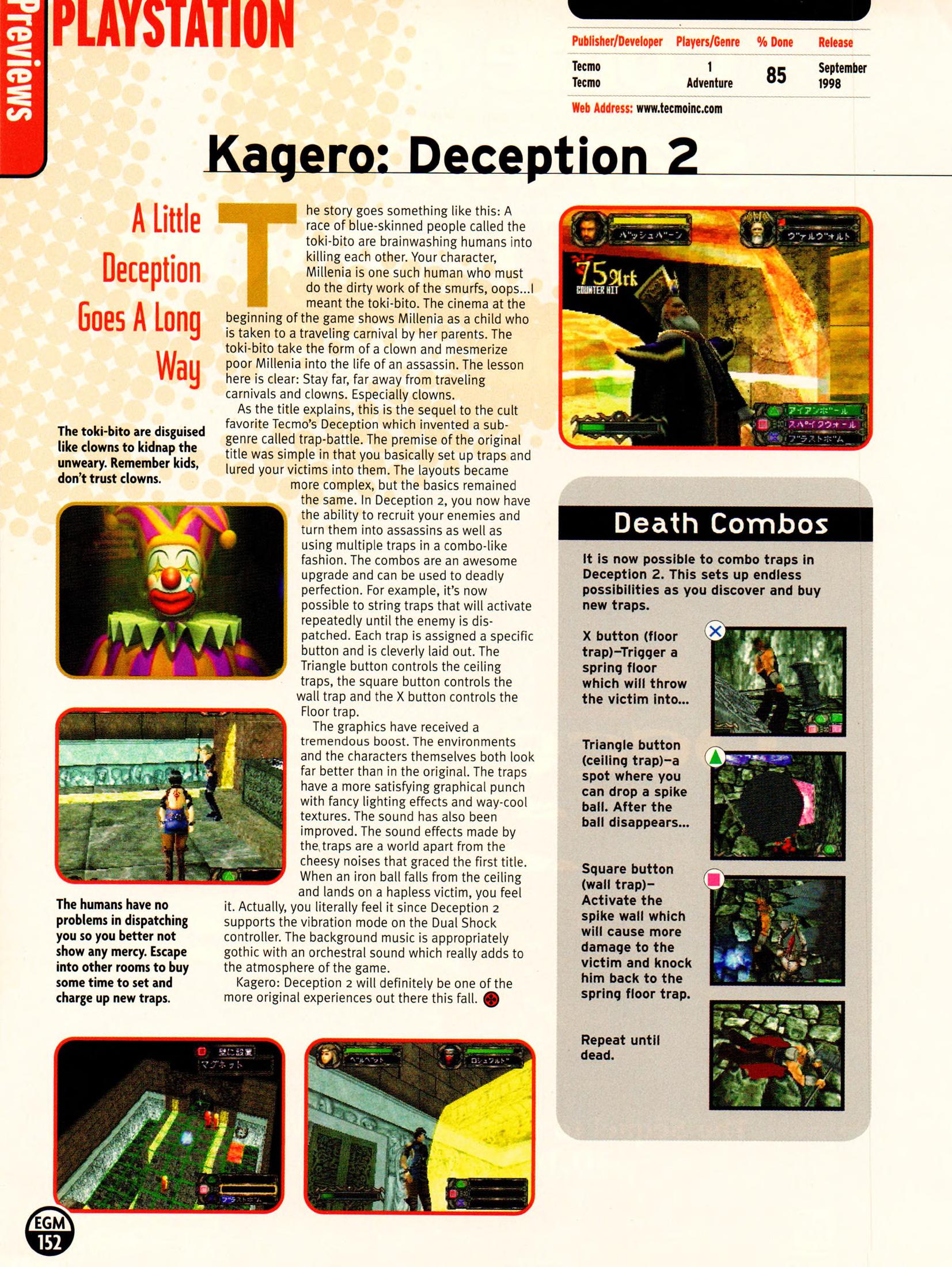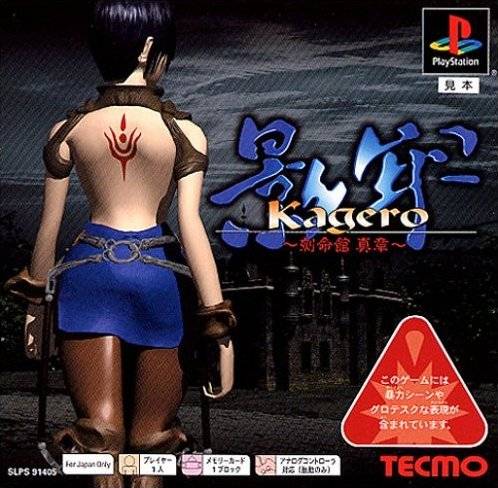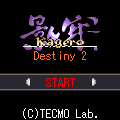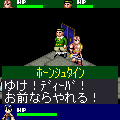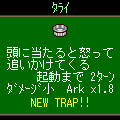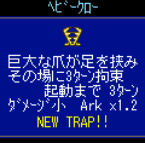Introduction
The following page is under construction.
My intention is for this page to chronicle the history and development of Kagero: Deception II.
My hope is that this will help provide additional context and better inform those looking for information on the series that is not readily available elsewhere, as such, this is not intended as a review, recap of the game's story or an introduction to the game itself.
There is a risk of spoilers for both Deception II and the franchise as a whole.
For the moment, I am choosing to simply list anything of interest I find that happens to be related, I will organize things into a more apropriate timeline once I have developed a clearer picture.
Feel free to contact me if you have any information not found on this page.
Kagero: Deception II
Kagero: Deception II is the second title in the Deception franchise and the blueprint from which all subsequent Deception games would derive their core gameplay mechanics.
At the time of it's release, Deception II was by far the best-supported of the PS1 Deception titles, receiving decent coverage from the gaming media, a modest amount of advertising, a demo disc campaign via PSExtreme and releases in both Japan, the US and Europe.
Deception II's story, as far as it's relation to the rest of the franchise is concerned, exists in a somewhat-nebulous state. There are implications that Invitation to Darkness's Astarte is a Timenoid and elements of Deception II are mentioned in both Trapt and Deception IV: Nightmare Princess...But these references feel more like cameos than genuine attempts to link the games together; Likewise, Deception III and Deception IV: Blood Ties make no mention of anything found in Deception II...But they also don't feature anything that would massively contradict what's been outlined and could very easily be folded into the same universe with little-to-no modification to their respective stories.
Millennia would go on to be the most recognizable characters from the Deception franchise, with numerous other Tecmo games featuring references to her. Dead or Alive, Fatal Frame, Monster Rancher, Warriors All Stars, Trapt and Deception IV: Nightmare Princess have all featured either a costume based on Millennia or Millennia herself.
Some regional differences between the Japanese and English versions of the game includes renaming the "Virgin Trap" scoring event to "Initial Trap" and renaming the "Soul Suck Bonus" to the "Soul Capture Bonus" (however, the term "soul suck" remains unchanged during the final score screen upon finishing the game).
Kagero: Castle of Deception
Originally, Kagero: Deception II was known in the west as "Kagero: Castle of Deception", this name stuck around until only a few months before the game's release.
"Castle of Deception" was initially meant to release in September of '98, two months after it's release in Japan, however something resulted in it being delayed by another month before finally making it's way to the USA on October 14th.
Advertising media for "Castle of Deception" includes a couple of interesting differences not seen in the final product: "Timenoids" are still referred to by their Japanese name "Toki-Bito", the mock-up for the "Castle of Deception" case declares itself to be a "trap simulation thriller" rather than a "action adventure thriller" as seen on the US cover art and, strangest of all, at least one advertisment talks about how the player will experience a "First Person Perspective Enviroment" and "Command Your Enemies: Turn your captives into loyal assassins and conquer the castle!" - both elements that do not appear in Deception II but sounds awfully similar to mechanics found in Tecmo's Deception: Invitation to Darkness.
A demo build of Deception II from E3 1998 can be found at the internet archive. This build uses the Japanese title and therefor does not mention "Castle of Deception" in-game, however, the disc itself is sharpied with the name "Kagero: Castle of Deception".
Footage of the "Kagero: Castle of Deception" demo build being played at E3 1998 can be found on youtube here.
Additional information regarding "Castle of Deception" can be found in the advertising materials section below.
Kagero: Destiny
Kagero: Destiny was a 2-episode reimagining of Deception II as an isometric, turn-based game for cellphones. Episodes 1 and 2 were both only available to the Japanese market via a number of different cellphone services, including i-mode's iアプリ, Vodafone's Vアプリ and EZweb's EZアプリ, for between 200-300yen each. Release dates for both episodes vary depending on service, with the earliest state release being August 2004 for Episode 1 via Vodafone.
Gameplay-wise Kagero: Destiny broke from tradition, eschrewing real-time 3rd-person gameplay and opting for a more tactical isometric turn-based approach (most likely due to hardware limitations), this shift resulted in a more puzzle-like or "thought-based" style of game with a greater emphasis on planning over action and reaction. Traps still played a core role, with players able to both trigger and chain traps together into trap combos. 18 traps were featured, including series staples such as falling vases, rolling rocks and press walls. Scoring also worked in a similar manner to Deception II with players earning Ark for long trap combos, clearing a chapter without taking damage and/or scoring a "perfect genocide".
Each episode consisted of 10 chapters, however there was little in the way of a storyline. Intruders would usually only speak a line or two of dialog at the start of a chapter and upon being killed with little else to aid in worldbuilding, as such, Kagero: Destiny holds no meaningful value with regards to the greater Deception canon.
Images of Kagero: Destiny are sparse and gameplay footage is essentially non-existent. A playable copy of the game might exist somewhere but, realistically speaking, it should probably be considered "lost media".
Trivia
@flyingomelette on Bluesky pointed out that the track "Call From That Direction" prominently features the same Islamic chanting sample originally used in the Fire Temple track from The Legend of Zelda: Ocarina Of Time, this sample was quite popular within the Japanese videogame music production scene as it also appears in "Landscape" from Kartia and "Illusions" from Persona 2: Eternal Punishment.
Media
Advertising material
Covers
Kagero:Destiny
- Shunga










